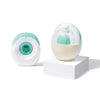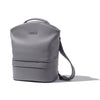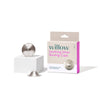Nurturing your baby is something every pregnant parent knows is a given. We all take the hospital classes, we pour over the books, we pay for the digital courses, but at the end of the day, the ideal feeding set up can take a serious detour from your original plan. According to data from the Centers for Disease Control and Prevention (CDC), as of 2020, about 80% of infants in the United States started out breastfeeding. However, by the age of 6 months, only about 57% of infants were still breastfeeding, with a further decrease to 35% at 12 months.
There are a million reasons why parents choose to stop breastfeeding, exclusively pump, begin combination feeding or exclusively formula feed. And we’d be remiss to mention that lack of societal support and universal paid family leave in the US certainly do not help families achieve their breastfeeding goals. Here are some of the other reasons besides lack of social support that you may find breastfeeding challenging:
-
Latching difficulties: Some babies may have difficulty latching onto the breast correctly, which can cause discomfort and difficulty with milk transfer.
-
Engorgement: In the early days of breastfeeding, a mother's breasts may become engorged with milk, which can be uncomfortable and make it harder for the baby to latch.
-
Pain: Breastfeeding can cause sore nipples, breast tenderness, and other discomforts.
-
Milk supply issues: Some mothers may have difficulty producing enough milk, while others may experience oversupply, which can lead to other issues such as engorgement or mastitis.
-
Other health issues: Certain health conditions, such as mastitis or thrush, can make breastfeeding more challenging.
Combination Feeding Has Entered The Chat
Breastfeeding and formula feeding, frequently referred to as combination feeding, is a great option for moms who want to include breast milk in their baby’s feedings but rely on formula as well.
Here are three ways you can combination feed your baby:
-
Supplement with Formula
When supplementing with formula, a baby is receiving most of their nutrition from breast milk. The formula supplement is added if the baby is not getting enough breast milk or just needs extra nutrition for a medical reason. -
50/50 Breast Milk and Formula
Families who choose to do an even split of formula and breast milk do so for a multitude of reasons. This feeding method allows the baby the opportunity to have the added nutrients from the mother’s breast milk in addition to the nutrients from the formula. -
Supplement with Breast Milk
When supplementing with breast milk, a baby is receiving most of their nutrition from formula. The breast milk may be added for intermittent nursing sessions or the occasional bottle, depending on the mother’s supply.
All of these options have one thing in common: they provide a baby with the added benefits of breastmilk while ensuring the baby is happy and healthy.



















